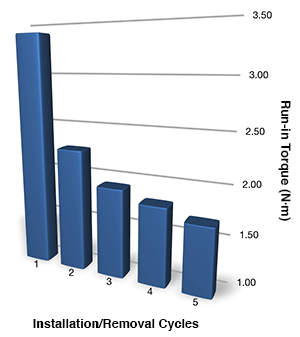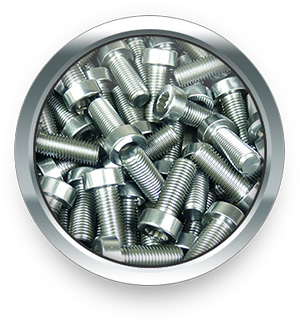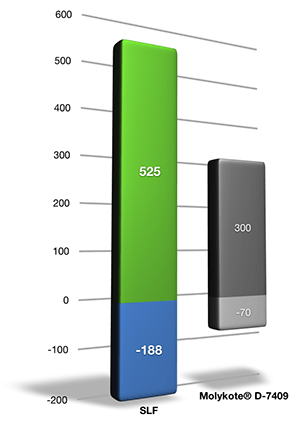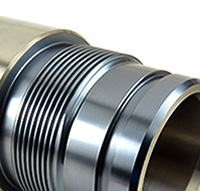
The inefficiencies of fasteners
It is estimated that less than 20% of the tightening torque is actually used to preload (tighten) a bolt with the remaining 80% or more being being required to overcome the combined frictional resistance between the thread forms and the nut or bolt head face.
Minimising friction on threaded fasteners is a vital requirement towards reducing run-in torque, increasing preload capacity and eliminating thread galling.

Nothing but benefits
Offering the lowest coefficient of any commercially available coating Solid Lubrication Film (SLF 74/16) coated fasteners dramatically reduces frictional resistance to provide a range of beneficial properties:
- Reduced run-in torque.
- Higher conversion of torque to preload.
- Anti-galling/anti-seizure protection.
- Reduced bolt failure.

Precision. Uniform. Conformal.
Deposited to a precision thickness of 0.5µm, Solid Lubrication Film faithfully follows the contours of a threaded form without building up in the thread valley’s or impairing existing clearances between mating parts. Even ultra-fine threads can be coated without clogging up.

Flexible capability
The unique flexibility of the SLF process facilitates the possibility to efficiently coat a single one off fastener to economically processing thousands off.
Bolts, nuts and inserts can all be coated.

Wide window of operation
Ideally suited to materials that are notoriously susceptible to galling, such as titanium, stainless steel and aluminium, SLF provides an ultra-low friction barrier across a temperature spectrum from –180°C to in excess of 500°C that protects fasteners from damage and seizure through a multi-cycle operation.
With it’s low outgassing and non-migratory properties, SLF is a perfect solution for assemblies used under vacuum, space or exposed to radiation.
Improve your thread capabilities
Check out the beneficial properties of Solid Lubrication Film at our coatings section by clicking here and see how Refmet Ceramics can assist in overcoming your thread component issues.
Learn more:
 Coatings
Innovative surface coatings based on diamond, ceramics, composites and solid lubrication films.
Coatings
Innovative surface coatings based on diamond, ceramics, composites and solid lubrication films. Applications
Bearings, gears, tooling, splines, threads, punches, dies, leadscrews... discover your limitless potential.
Applications
Bearings, gears, tooling, splines, threads, punches, dies, leadscrews... discover your limitless potential.
 Industries
Aerospace, motorsport, stamping, medical, vacuum, plastic moulding, sciences and many more available.
Industries
Aerospace, motorsport, stamping, medical, vacuum, plastic moulding, sciences and many more available. Contact
Contact our engineers to see how Refmet can provide a solution to your wear and friction issues.
Contact
Contact our engineers to see how Refmet can provide a solution to your wear and friction issues.



